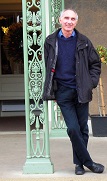


|
|
|
|||||||||||||||
|
|
||||||||||||||||
|
|
||
|
|
London Kensington Palace
The Palace has witnessed a number of sad occasions, in 1694 Queen Mary II (1662-1694) died there of smallpox while William III (William of Orange (1650-1702)) died following a fall from his horse in 1702 and a subsequent chill. The rooms display personal items and tell the story of their occupants and their lives enabling visitors to learn of its history and the people involved.
Leading to the King’s State Apartments is the King’s Staircase which includes the Presence Chamber with a gilded armchair; the Privy Chamber with a beautifully painted ceiling; the Cupola Room which houses a monumental musical clock at the centre of the room; the Council Chamber which displays the dress used by courtiers; and the Kings Gallery with a row of windows, red wall covering and paintings and its beautiful ceiling. The other main staircase, known as the Wren Staircase, leads to the Queen’s Gallery; Closet; eating, drawing, and bedroom, and the rooms that made up the Queen’s State Apartments which were added by Queen Anne (1665-1714). The orangey was also added by Queen Anne in 1704. But it was George I (1660-1727) who spend a considerable amount of money from 1718 renovating and improving the property including the Copular Room which was to become the principal stateroom. It was here that Princess Victoria was christened, following her birth at Kensington Palace in 1819. Victoria was to spend 18 years at Kensington Place and it was there that in 1836 she was to meet Albert who was to be her consort. The exhibits trace the events of Victoria’s life and show the rooms and possessions that marked her connection with the Palace. When Victoria became Queen In 1837she held her first meeting of her Privy Council in the Red Saloon at Kensington Palace. It was Queen Victoria (1819-1901) who was to move to Buckingham Palace making that the official residence of the British Monarch. In 1981 following the marriage of Prince Charles and Lady Diana Spencer, the couple moved into an apartment in the Palace that was to be the home of Princess Diana until her death in 1997 when the palace gates were to become the focal point for the public's mourning. The palace contains a collection of dresses of Princess Diana, Princess Margaret, and Queen Elizabeth II. Following their wedding in April 2011 Kensington Palace became the home of the Duke and Duchess of Cambridge. Kensington Palace is managed by Historic Royal Palaces and is furnished with items from the Royal Collection. From 2010 to 2012 it underwent a £20 million restoration project to make it appealing to visitors and one of London’s major tourist attractions.
Addition information can be seen on Encyclopaedia Britannica |
|
|
|
||
All Photographs were taken by and are copyright of Ron Gatepain
| Site Map |
